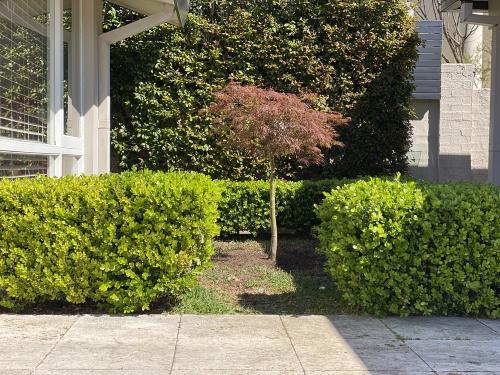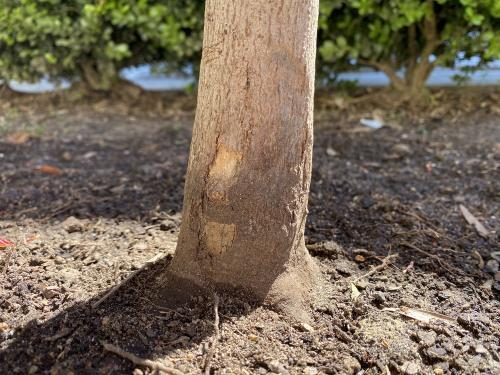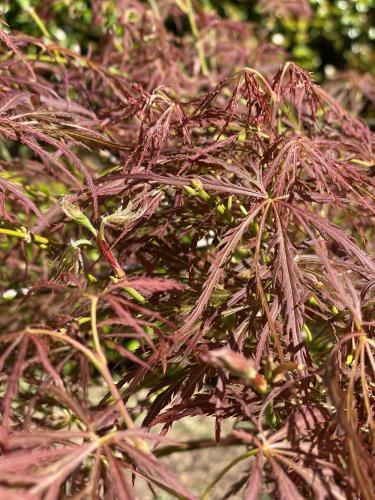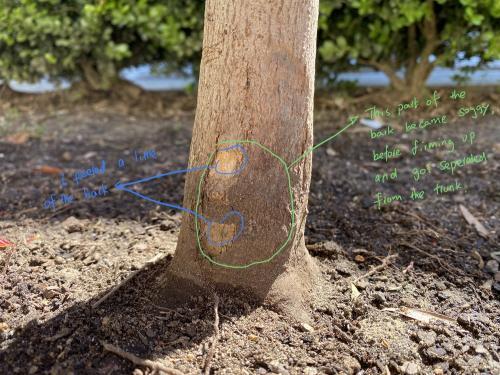



DaisyI said:
You don't say where your tree is located so some thoughts...
JMs do not like to be planted deep - they should always be planted on a mound with the top of the root ball exposed (you can cover it with a little soil) because they are very susceptible to root rot.
The thin bark is easily damaged by anything wet (dirt, weeds, compost) against it or if hit by something (lawnmower, shovel).
Did you fortify the soil when you planted? Fertilizer, especially if high in nitrogen, can kill a JM. JMs are such slow growers, balanced fertilizer once in the spring is all it will ever need. Never fertilize a newly planted tree.
CalPolygardener said:There was an issue at some time in the past and has developed a dead patch on the lower trunk. If you look just to the right of the green line there is a vertical crack. Above the line and to the left there is another crack. Between the two and slightly above the second one there is a very slightly darker patch. The cambium in that area is dead and the bark will peel off eventually. Don't panic. The tree will grow new bark over that area in time if it keeps growing steadily and you don't cover that area with mulch or soil. There is nothing to do but monitor for changes.
DaisyI said:When you water, make sure you water enough so the water sinks below the rootball. You can judge that by building a soil berm around the tree at least as wide as the width of the tree. Dig a hole in the same area and fill it with water. Let it sink in then dig down to see how far the water has penetrated into the soil. Now you can calculate how many times you will need to fill the basin around your tree so the water reaches below the roots.
For example: Your berm in 3 inches tall. You dig a hole 3 inches deep, fill it with water then dig down to find the water has penetrated 6 inches. If the bottom of the rootball is 24 inches down, you will have to fill the basin at least 4 times to water your tree thoroughly. There's nothing that can kill a JM faster than lack of water. The other option is to set a small sprinkler to run and let it until water starts to puddle.
To measure how much moisture is in the soil, find a long skinny stick (I use bamboo plant stakes or wood dowels) and push it into the soil as far as you can. Leave it a minute and pull it out. You will be able to see/feel moisture on the stick and so judge if the soil is staying too wet or too dry. You don't want things to progress this far, but an overwatered tree dies from the bottom up but an underwatered tree dies from the top down. JMs need to stay damp but they also need good drainage.
Don't fertilize again until next spring. JMs are slow growers - an excess of fertilizer forces them to grow too fast and will kill them.